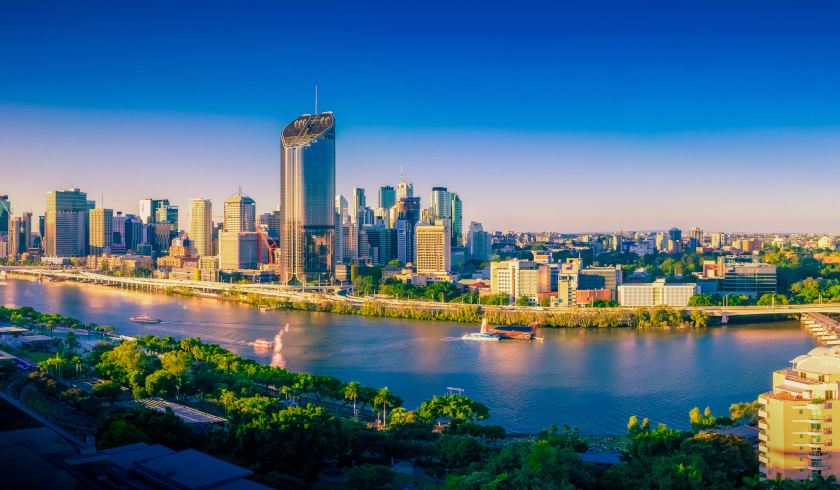6 out of 8 capital cities have ‘undervalued’ housing prices
Australia’s historic property boom is pushing house prices to record-breaking levels, but new research shows that house prices are still undervalued across most of the country.

According to InvestorKit’s Overvalued or Undervalued? white paper, which analysed eight capital cities and 25 most populated regional cities in Australia, six of the eight capital cities are still considered affordable markets, with only Sydney and Melbourne exceeding the affordability threshold for house prices.
Arjun Paliwal, head of research at InvestorKit, said: “Our analysis shows that most of Australia’s capital cities are still affordable for Australians. However, cash rate hikes would affect housing affordability to a large extent, particularly in the ACT, where a 1 per cent rate rise would see house prices shift from affordable to unaffordable. Fortunately, the RBA recently indicated that there would not be a cash rate increase in 2022 – good news for homebuyers planning to enter the market in the coming year.”
Housing affordability defined
The study looked at property affordability using a combination of house loan serviceability, or the ability to repay a loan, and market pressure analysis.
It calculated the percentage difference between the current median house price and the “affordable house price” in each capital city to see if a market was unaffordable or “overvalued”, or deemed affordable or “undervalued”, meaning whether “prices are higher or lower than the average household can afford”.
InvestorKit also explained that housing affordability could be measured in a variety of ways, including debt-to-income ratios, income-to-repayment ratios, time to save a deposit, and more.
For this research, loan serviceability was measured by mortgage payments at various interest rates versus incomes. And then the affordable price was determined using dual-income earners’ average income, a loan-to-value ratio of 80 per cent, a loan affordability threshold of 30 per cent of net income, a 30-year loan term, a current home loan interest rate of 3.5 per cent, and a possible cash rate hike to 4.5 per cent.
Analysis and 2022 forecast
Here’s the 2022 forecast for capital cities of InvestorKit based on their analysis of each location’s market pressure (supply and demand analysis), current 10-year performance (market cycle positioning), and yields:
Sydney
The median house price in Sydney is above the affordable level by about a quarter, and by nearly a third if the home loan interest rate rises by 1 per cent.
With the median house price at $1.11 million and the affordable median price at 3.5 per cent interest being $862,000, this implies that house prices in Sydney are 22.3 per cent more than the average household can afford. These indicators make Sydney the capital city with the most overvalued house prices in the country.
However, it is worth noting that personal income ranges from the eastern suburbs to the far south-west are extremely vast. To be meaningful for an individual purchasing choice, trends must shift from macro to micro.
On the sales side, there is a lot of pressure, but the number of listings for sale is levelling off, which can slow the rate of increase. Rental vacancy rates are still above the 2 per cent sweet spot, despite the fact that they are dropping. Due to the significant increase in sale prices in Sydney over the previous 10 years, the yield level is among the lowest in the country.
Melbourne
The median house price of $818,000 in Melbourne has just surpassed the affordability threshold by 2.8 per cent. It will increase by roughly 11 per cent if the home loan interest rate rises by 1 per cent to 4.5 per cent. This will make the market 13.9 per cent overvalued, with the maximum affordable housing price for a typical dual-income household being $795,000.
Melbourne’s personal income ranges, like Sydney’s, are extraordinarily wide. As a result, classifying it as a single-income level may only be regarded as a “starting point” rather than a “definite”. To have relevance for an individual purchasing choice, trends must shift from macro to micro.
InvestorKit discovered that market pressure is significant on the sales side, implying short-term capital growth. However, as the number of sales listings increases, price rise is expected to slow down.
On the sales side, market pressure is considerably high, but listings for sale are increasing, which can slow price increase in the near future. Rental vacancy rates have levelled out and are now over the 2-percentage-point sweet spot. Due to the steep rise in sale prices in Melbourne over the previous decade, the yield is among the lowest in the country.
Brisbane
With a $603,000 median house price, Brisbane is 29.6 per cent less than the affordable median price at a 3.5 per cent loan rate, indicating that the market is undervalued. Brisbane would still be undervalued at 14.8 per cent even if interest rates were to rise 1 per cent.
Brisbane and south-east Queensland are swiftly gaining popularity, as seen by interstate migration numbers, owing to their lower cost of living than Sydney and Melbourne.
Brisbane’s market pressure is diminishing for both sales and rental markets, but they are still at high levels, predicting a robust 2022. Yields are moderate, falling just short of the healthy guideline of 4 per cent.
Adelaide
Adelaide’s median house price of $526,600 is 42.8 per cent lower than the affordability threshold and still would be 26.5 per cent lower than the threshold if the home loan interest rate rises by 1 per cent. Adelaide’s sales market pressure is substantially higher than it was a year ago and is predicted to sustain its growth in 2022.
Its rental market is still on the upside, as vacancy rates remain considerably below 2 per cent. Investors can anticipate a healthy-level yield of at least 4 per cent.
Perth
InvestorKit uncovered that house prices in Perth are the most undervalued of all the capital cities. The median property price of $510,000 is 63 per cent less than the maximum price a local household can afford and 44.7 per cent less if interest rates rise 1 per cent.
Mr Paliwal attributed the big disparity in home affordability to Perth’s high personal income and low median house price, which is the lowest among capital cities.
Furthermore, it was pointed out that Western Australia’s economy is primarily reliant on iron ore exports, making the state’s economy less balanced than the others.
Perth is under a lot of market pressure, with the volume of both sales and listings having reached its peak and is predicted to slow growth rates until 2022. Vacancy rates in the rental market are still quite low, indicating a tight rental market. A healthy-level yield of 4-plus per cent can likewise be expected.
Hobart
At 3.5 per cent interest, Hobart’s median house price of $595,000 is 18.3 per cent undervalued. If interest rates were to rise by 1 per cent, median house prices would fall by 5 per cent below the affordability threshold. Given that Hobart has the lowest average personal income of the major cities, the median house price is still unaffordable for locals if interest rates rise.
The sales market is tremendously competitive, with listings steadily increasing but sales volumes gradually decreasing. With property values up 77 per cent in 10 years, this might translate to a good 10-year performance.
Vacancy rates are exceedingly low, indicating that the rental market is under a lot of pressure. A healthy-level yield of 4-plus per cent can be expected.
Darwin
The typical house price of $550,000 in Darwin is 61.3 per cent below the affordability limit and would be 42.8 per cent lower if interest rates climbed to 4.5 per cent.
According to Mr Paliwal, Darwin’s high personal income level, the highest among capital cities, and comparatively cheap property prices account for the big percentage disparity. The study has also noted that mining is the territory’s primary business, making the economy less balanced than the other states.
InvestorKit’s head of research likewise stated that Darwin’s sales market is at its best in a decade, describing it as “so active that both listings and sales volume are increasing steadily. Many are trying to use this booming time to get out, in our opinion, as listings don’t rise at this rate when boom conditions typically occur”.
Low vacancy rates and a decrease in the quantity of for-lease listings both imply that the rental market is under a lot of pressure. A healthy-level yield of 4-plus per cent can be expected.
ACT
The ACT’s median house price of $826,000 is 6.6 per cent less than the affordability criteria, making it an undervalued market. Houses would become 5.6 per cent overvalued if loan rates were raised by 1 per cent, which is 5.6 percent more than the average dual-income household could pay.
ACT’s current affordability can be attributed to its high personal income level, despite the fact that property prices are actually quite expensive, said the report.
Canberra is experiencing tremendous market pressure in both the sales and rental sectors even during the pandemic since it was spared from onerous lockdowns and also due to a strong local economy.
Since early 2021, monthly sales volumes have outpaced the number of listings, indicating a supply shortage. Despite the fact that sales volumes are dropping, the low number of listings indicates that 2022 will be a good year. Since the beginning of 2021, rental vacancy rates have been below 1 per cent. Investors can expect a reasonable yield of about 4 per cent.
